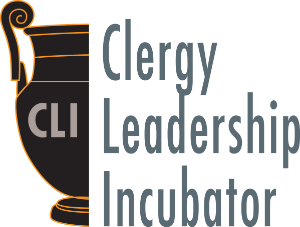Design Thinking Techniques for Synagogues: Let’s Talk Tachlis
When our entire world changed overnight a year ago, last March, we in the 
synagogue world had countless new challenges to address as the enormity of the pandemic came to light. This unprecedented time was clearly going to require innovative solutions and a very different kind of thinking. It quickly became clear that in order to be able to address these types of difficult challenges now and in the future, we would need to completely change our mindset and teach ourselves new problem-solving techniques.
Back in the summer of 2018, my life was forever changed when I stumbled upon an ABC Nightline clip known as the IDEO shopping cart video. I must have watched that clip a dozen times. Here it was — the key to innovation in an 8-minute video. I quickly became obsessed with Design Thinking, or Human-Centered Design as it is also known, and immediately began applying it to my work with congregations. I read everything I could get my hands on and listened to every podcast I could find. It became the lens through which I began to see everything. There was no challenge I couldn’t “design think” my way out of.
When in December 2018, eJP published my article “Designing the Synagogue Member Experience”, I heard from people around the world for whom these ideas resonated, and who were excited to apply them to synagogue life. People began asking me for specific techniques that they could use to address the challenges they were facing.
Then in late 2019, I participated in the LUMA Institute’s certification program in human-centered design, which gave me the practical tools I needed to apply the design thinking mindset to my work, in the form of 36 methods that can be combined into “recipes” to solve complex design challenges.
Below are some examples of how I use these techniques to help congregations think more creatively about the problems they want to solve, and come up with more innovative solutions.
- Defining the Challenge using “How Might We…?”
When faced with any challenge, the first thing we need to do is define the problem. It is helpful to phrase the question in the form, ”How might we…?”
For example, some of the questions I urge congregations to consider are…
- How might we create compelling worship experiences that inspire people of all ages?
- How might we design board meetings that people look forward to?
- How might we make every member feel seen and appreciated?
- How might we create experiences that delight our members?
- How might we eliminate cultural issues that get in the way of identifying new leaders?
… and in our current situation, How might we help congregants feel connected to, and engaged in the synagogue while our building is closed and people are required to remain at home?
- Focusing on the Right Problem with Abstraction Laddering
One congregation I was working with was beginning the task force phase of strategic planning. I used an exercise called Abstraction Laddering to help them gain focus and determine the right problem to solve.
The way abstraction laddering works is that you move up the ladder by asking the question, “Why?” and you move down the ladder by asking the question, “How?”
So, beginning with the question, “How might we engage every member in a meaningful way?”, let’s move “up the ladder” and ask ourselves why we want to engage them. One answer might be to help them feel more connected to the congregation. Why do we want them to feel more connected? So they feel loved and supported. Why do we want them to feel loved and supported? So they remain members of the congregation.
Now let’s move “down the ladder.” How might we engage every member? Perhaps by creating affinity groups. How could we create affinity groups? By learning about members’ interests. How could we learn about their interests? By doing group interviews.
We could add many more rungs to this ladder, but you get the idea. The exercise can help clarify whether we are asking the right question, or if we need to “zoom in” or “zoom out.”
- Identifying Your Stakeholders Using a Stakeholder Map
If I were to ask congregational leaders who the congregation’s stakeholders are, they would likely say the staff, the members, and perhaps the donors. But if you think a bit longer, you will come up with others. You will also realize that neither the staff members nor the membership can be treated as monolithic. So, your stakeholder map begins to grow.
- Understanding Survey Results Using Affinity Clustering
Another synagogue I was working with had just completed a congregational survey. In addition to lots of quantitative data, they had received hundreds of comments on a wide range of topics, and the leadership was overwhelmed. I used a combination of two different methods to help them organize these comments and better understand what their members were telling them.
Using an exercise called Rose Thorn Bud, I put each comment on a post-it note, color-coding them to indicate whether they represented positive comments (pink), negative comments (yellow), or areas for potential growth (green), and then grouped them by theme, using an exercise called Affinity Clustering.
- Addressing Unmet Needs Using Persona Profiles
This same congregation had learned from their survey that members in their 50s reported feeling less connected to the synagogue than other demographic groups. Using the survey responses of this demographic, and some group interviews, we developed a composite fictional persona (we named him Alex) to help us better understand the feelings and attitudes of this group, so that we could think more specifically about how to help them feel more connected and engaged.
The Design Thinking Mindset
Back in March, when our buildings closed, synagogue leaders quickly began to gather teams, listen carefully to members’ concerns, consider a range of options, test out the most viable ideas, and revise them as needed.
They may not have called it Design Thinking, but this process of deeply listening to people in order to truly understand their needs and desires (empathy), thinking expansively about what’s possible (ideation), doing small experiments to test out the most viable ideas (prototyping), making improvements, and then testing them again (iteration) – that is human-centered design in a nutshell.
I can’t say for sure whether the innovations that have taken place in our communities over the last year – Zoom bar mitzvahs and funerals, seders in a box, congregational meetings with drive-thru voting, online USY conventions, virtual summer camp, and all of the exciting ways that congregations re-designed High Holidays this year – were the result of design thinking sessions, but these are exactly the kinds of innovative ideas that we can expect to come from a design thinking mindset. If we want to be able to continue to adapt and innovate as our world continues to change ever more rapidly, then developing a design mindset, and learning and practicing these types of skills is a very good start.
_______________________
Aimee Close is the Consultant for Strategic Planning & Leadership Development, and Liaison to Small Congregations for the United Synagogue of Conservative Judaism (USCJ). A version of this article first appeared in eJewishPhilanthropy on June 6, 2020.

